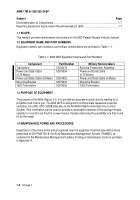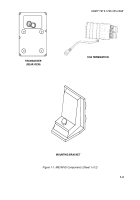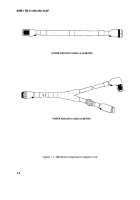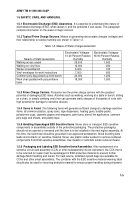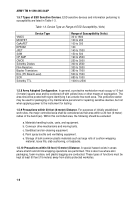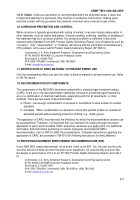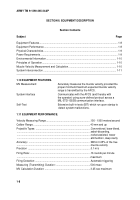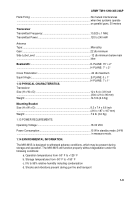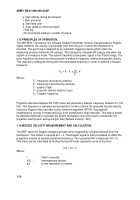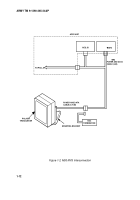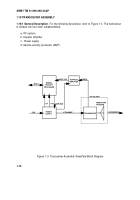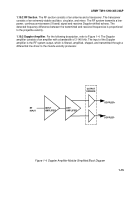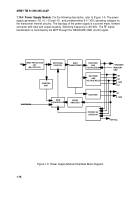TM-9-1290-365-24-P - Page 30 of 334
ARMY TM 9-1290-365-24&P
e. High altitude during air transport
f. Rain and wind
g. Sand and dust
h. Solar radiation (direct sunlight)
i. Salt fog
j. Environments leading to growth of fungus
1.15 PRINCIPLES OF OPERATION.
The M93 MVS Transceiver is a compact Doppler transmitter-receiver that generates a Doppler
signal related to the velocity of projectiles fired from the gun on which the transceiver is
mounted. The gun firing is detected by an automatic triggering device which starts the
measuring process (transmits RF-energy). The transceiver transmits RF energy only when the
system is in measure mode. The system transmits a low-power signal in the X band range. The
echo frequency returned from the projectile is shifted in frequency relative to projectile velocity.
This frequency undergoes mixing with the transmitted frequency in order to achieve a Doppler
frequency:
F
d
= F
t
- F
r
= 2F
t
V
C
Where:
F
r
- frequency received by antenna
F
t
- frequency transmitted by antenna
C - speed of light
V - projectile velocity relative to gun
F
d
- Doppler frequency
Projectile velocities between l50-1500 m/sec will generate a Doppler frequency between 10-100
kHz. This frequency is sampled and processed in order to derive the projectile muzzle velocity.
Using the Doppler effect and fast fourier transform algorithm (FFTA), the projectile
instantaneous velocity is measured at up to 64 predefined in-flight intervals. This data is sorted
by statistical methods to calculate the best fit regression curve and used to extrapolate the
projectile velocity upon exiting the gun tube (Muzzle Velocity - MV).
1.16 MUZZLE VELOCITY MEASUREMENT AND CALCULATION.
The MVP starts the Doppler sampling process when triggered by a signal received from the
transceiver. This instant is referred as t = 0. The Doppler signal is then processed to obtain the
projectile's velocity at several predefined instances. The requested MV is obviously V(t = 0).
This value can be calculated by finding the best-fit linear regression curve of the form:
V(t) = at + b
Where:
t
-
Time in seconds
V(t) -
Instantaneous velocity
a,b
-
Linear regression constants.
1-10
Back to Top



